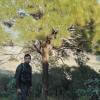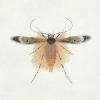Autonomous camera traps for insects provide a tool for long-term remote monitoring of insects. These systems bring together cameras, computer vision, and autonomous infrastructure such as solar panels, mini computers, and data telemetry to collect images of insects.
With increasing recognition of the importance of insects as the dominant component of almost all ecosystems, there are growing concerns that insect biodiversity has declined globally, with serious consequences for the ecosystem services on which we all depend.
Automated camera traps for insects offer one of the best practical and cost-effective solutions for more standardised monitoring of insects across the globe. However, to realise this we need interdisciplinary teams who can work together to develop the hardware systems, AI components, metadata standards, data analysis, and much more.
This WILDLABS group has been set up by people from around the world who have individually been tackling parts of this challenge and who believe we can do more by working together.
We hope you will become part of this group where we share our knowledge and expertise to advance this technology.
Check out Tom's Variety Hour talk for an introduction to this group.
Learn about Autonomous Camera Traps for Insects by checking out recordings of our webinar series:
- Hardware design of camera traps for moth monitoring
- Assessing the effectiveness of these autonomous systems in real-world settings, and comparing results with traditional monitoring methods
- Designing machine learning tools to process camera trap data automatically
- Developing automated camera systems for monitoring pollinators
- India-focused projects on insect monitoring
Meet the rest of the group and introduce yourself on our welcome thread - https://www.wildlabs.net/discussion/welcome-autonomous-camera-traps-insects-group
Group curators
- @tom_august
- | he/him
Computational ecologist with interests in computer vision, citizen science, open science, drones, acoustics, data viz, software engineering, public engagement



- 8 Resources
- 54 Discussions
- 5 Groups



- 9 Resources
- 2 Discussions
- 9 Groups
No showcases have been added to this group yet.
- @TheDataEnthusiastic
- | He/Him
Hi, I'm pursuing Master's in Data Science. And I want work help protect nature and wildlife.
- 0 Resources
- 0 Discussions
- 13 Groups
- @apcxs
- | He, his, them
- 0 Resources
- 0 Discussions
- 11 Groups
- @tom_august
- | he/him
Computational ecologist with interests in computer vision, citizen science, open science, drones, acoustics, data viz, software engineering, public engagement



- 8 Resources
- 54 Discussions
- 5 Groups
- @womble
- | he/him
AI Researcher, with 30+ years experience in academia and industry. Currently consulting for a company using drone imagery to analyse property heat loss. Expertise in machine learning, NLP, python, Google Cloud. https://julianrichardson.net
- 0 Resources
- 6 Discussions
- 6 Groups
- @Grace_Kioko
- | She
I am an arachnologists from Kenya with over 9years experience. I enjoy training the public on importance of arachnids through public talks, walks and media engagements. I published a recent checklist from Kenya and encourage citizen science through iNaturalists uploads to map sp
- 0 Resources
- 0 Discussions
- 1 Groups
Holder of BSc in Applied Zoology. Assistant Ecologist at Ruaha National park.


- 0 Resources
- 7 Discussions
- 12 Groups
- @ecosystem2
- | he/him
- 0 Resources
- 0 Discussions
- 5 Groups
- @LasseK
- | He/Him
Bioinformatician concerned with wild bee monitoring and interests in all things concerning automation.
- 0 Resources
- 0 Discussions
- 1 Groups
- @jenlaw
- | She/Her
Biodiversity scientist specialising specialising in the study of tropical ecosystems and their biodiversity using multiple forms of technology, including acoustics, images and robotics.
- 0 Resources
- 0 Discussions
- 14 Groups
- @Riley
- | she/they
I'm a Data Scientist at Western EcoSystems Technology. I am interested in AI processing and statistical modeling of acoustic data and camera trap and drone imagery.
- 3 Resources
- 5 Discussions
- 5 Groups
- @jscanass
- | he/him
University College London (UCL) & Red Ecoacústica Colombiana
PhD Student at UCL
- 0 Resources
- 1 Discussions
- 8 Groups
Tropical ecologist working on community ecology and citizen science with ants as main research models
- 0 Resources
- 0 Discussions
- 5 Groups
This position focuses on the ecology aspect of the project, while a second PhD in Ilmenau will be dealing with programming/AI development. Because of the high temporal resolution of our data, we can investigate how land...
9 January 2023
a technology-led solution to understanding the honeybees of the wasp world
8 December 2022
In case you missed our webinar on Pollinator monitoring, here is the recording. We had presentations from three teams who will be presenting their work in designing automated monitoring tools for flower-visiting...
17 November 2022
Five articles that include conservation tech published at Mongabay
20 October 2022
Nice overview paper on technological advances to improve insect monitoring
16 September 2022
Job opening at the UK Centre for Ecology and Hydrology
19 August 2022
November 2023
event
| Description | Activity | Replies | Groups | Updated |
|---|---|---|---|---|
| Gotcha, well I look forward to seeing future iterations and following along with your progress!! |
|
Autonomous Camera Traps for Insects, AI for Conservation, Emerging Tech, Open Source Solutions, Latin America Community | 1 year 3 months ago | |
| More cool things surrounding the Mothbox project keep happening! Here’s a recap of cool developments over the past month!New Teammate! Bri... |
|
Autonomous Camera Traps for Insects, Latin America Community | 1 year 3 months ago | |
| For our [mothbox project](https://forum.openhardware.science/c/projects/mothbox/73) we are programming pijuices and pis to automatically... |
|
Autonomous Camera Traps for Insects | 1 year 4 months ago | |
| Hi, I made a little utility script that folks here might find useful (or might have MUCH BETTER VERSIONS OF! and if so, let me know!) ... |
|
Autonomous Camera Traps for Insects | 1 year 5 months ago | |
| We did some more testing with the Mothbeam in the forest. It's the height of dry season right now, so not many moths came out, but the mothbeam shined super bright and attracted a... |
|
Autonomous Camera Traps for Insects, Latin America Community | 1 year 5 months ago | |
| Hi Danilo, yes just in time ;-) |
|
Camera Traps, Autonomous Camera Traps for Insects | 1 year 6 months ago | |
| Yep, here:Currently it only installs on older Jetsons as in the coming weeks I’ll finish the install code for current jetsons.Technically speaking, if you were an IT specialist... |
|
Autonomous Camera Traps for Insects, Camera Traps | 1 year 7 months ago | |
| Great work! I very much look forward to trying out the MothBeam light. That's going to be a huge help in making moth monitoring more accessible.And well done digging into the... |
|
Autonomous Camera Traps for Insects, Latin America Community | 1 year 7 months ago | |
| The preprint to our camera trap paper is now available at bioRxiv. |
+23
|
Autonomous Camera Traps for Insects | 1 year 8 months ago | |
| Thanks a lot for this detailed update on your project! It looks great! |
|
Autonomous Camera Traps for Insects, Latin America Community | 1 year 9 months ago | |
| It depends on which scientists you talk to. I am an favor of just doing a timelapse and doing a post-processing sort afterwards. There's not much reason i can see for such motion... |
|
Autonomous Camera Traps for Insects, Latin America Community | 1 year 9 months ago | |
| For anyone interested: the GBIF guide Best Practices for Managing and Publishing Camera Trap Data is still open for review and feedback until next week. More info can be found in... |
|
Autonomous Camera Traps for Insects, Camera Traps | 1 year 9 months ago |






























